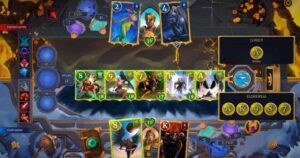Idle RPGs tend to live or die by how well they handle progression without overwhelming the player. Fortress Saga seems to understand that, and its regular code drops are part of a broader strategy to keep players engaged without requiring constant grind.
The game is leaning on a familiar formula: hands-off gameplay mixed with flashy combat and just enough customization to keep people checking in. But it’s the reward structure including these time-limited codes that reveals what kind of experience it’s aiming to build.
Codes act as controlled progression boosts
The reward codes in Fortress Saga offer a rotating mix of in-game currency, enhancement materials, and character summon tickets. None of it breaks the balance, but it’s enough to accelerate early and mid-game development without forcing players to spend or stall.
This type of system isn’t new. Most mobile RPGs do it. What makes Fortress Saga interesting is how frequently it updates these codes and how they’re positioned not just for marketing events, but also tied to gameplay updates and milestones. That consistency suggests the devs are actively monitoring player retention and tweaking drop rates accordingly.
So far, the codes are skewed toward utility rather than novelty. You’re not unlocking exclusive content or game-breaking gear, just the kind of resources that smooth out grindy edges.
Active Fortress Saga codes
- FS100KDOWN – 10 Hero Tickets
- THANKYOUFO – 1000 Gems
- 1003DAY – 3000 Gems, 3 Cake
- FSBESTONE – 30 Repair Cat Tickets, 30 Cannon Tickets, 10 Hero Ticket
Gameplay loop stays simple, with layered strategy
The core gameplay follows the idle RPG blueprint. Characters battle automatically, while players focus on team composition, gear upgrades, and ability synergies. There’s a light narrative layer, but it doesn’t demand much attention. This is a game designed for background play with occasional bursts of decision-making.
What does stand out is the pace. Fortress Saga doesn’t overload with currencies or gated content early on. Progression feels linear and relatively smooth, especially if you’re redeeming the latest codes. That balance between automation and optimization is where most idle RPGs either click or fall flat. Here, it’s holding together well enough for a casual audience.
Visual style and character design
Aesthetically, Fortress Saga stays on-brand for fantasy idle games. Characters are stylized but not over-designed, with clean animations and bold colors. The UI is readable, if a bit dense in places, and the combat effects do enough to keep the screen from feeling static during auto battles.
There’s no real standout art direction here. It borrows from the usual gacha and RPG visual language: floating castles, oversized weapons, magic effects. It’s competent, but not pushing for visual innovation.
Why the code system matters
Beyond the free loot, the presence and structure of these codes tell us how the developers are approaching retention. They’re not reinventing anything, but they’re paying attention to engagement cycles. The reward cadence is regular enough to keep short-session players logging in, which fits with the game’s overall design.
If you’re looking at Fortress Saga from a systems perspective, it’s not trying to disrupt the idle genre. But it is trying to smooth out its friction points, and the use of codes is one way it’s doing that. The bigger question is how long it can maintain that without content fatigue setting in.
For now, the codes are less about generosity and more about calibration keeping players moving just fast enough to stay invested without burning through the loop too quickly. That’s a narrow window, but it’s one the game seems to understand.




